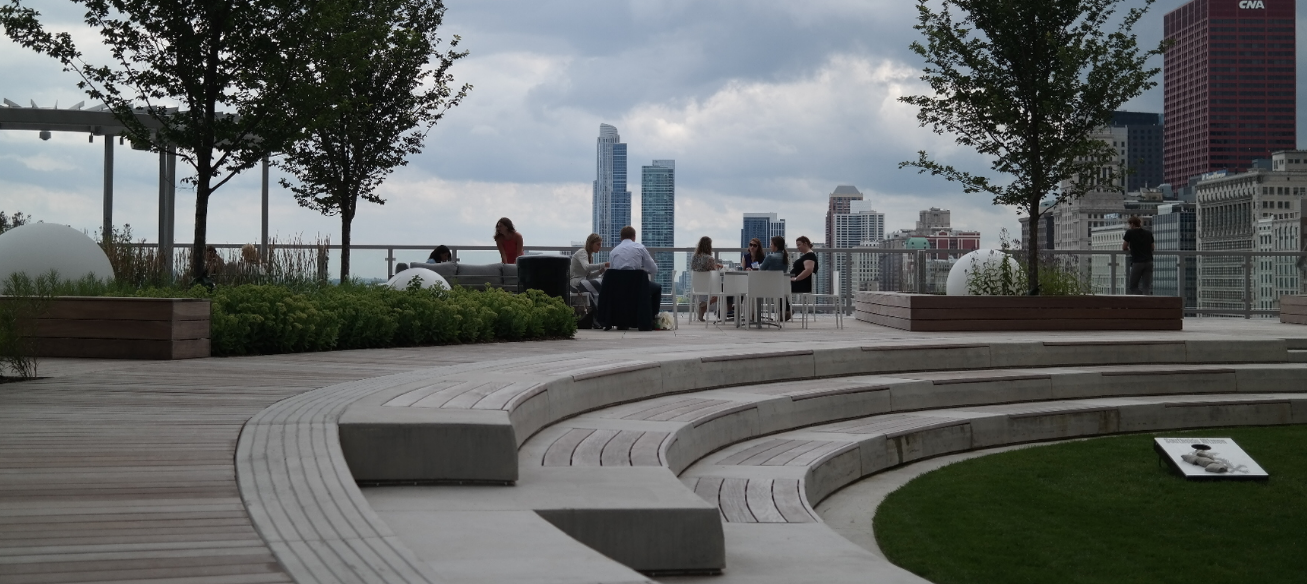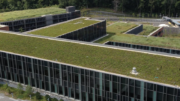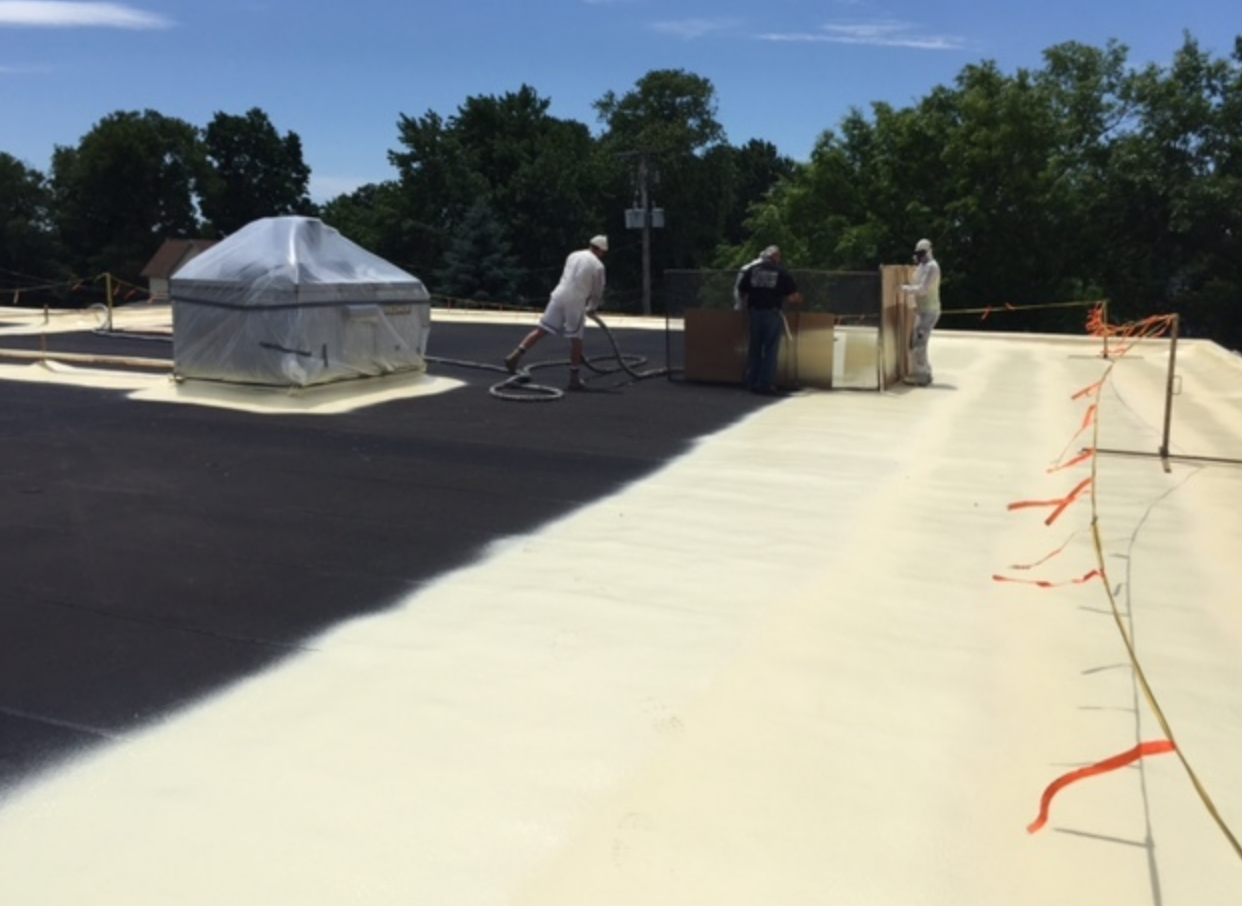Green Roofs Defined and Explained
A green roof is a supplemental roofing system that covers a conventional roof with a layer of vegetation. There are two basic types of green roofs: extensive and intensive.
Extensive green roofs are less than 6-inches deep and are typically 2 to 4 inches in depth. Their light weight makes them ideal for retrofit projects on older buildings or structures with limits on total weight load. Generally, extensive green roofs require minimal maintenance and can thrive with little supplemental irrigation in most temperate climate zones.
Intensive green roofs are deeper, ranging from 6 to 8 inches to sometimes 1 foot or more, which allows for more types of plants and maximizes potential storm-water retention. Heavier and more expensive to purchase and install than extensive green roofs, intensive systems are highmaintenance. They require routine plant care and site maintenance (such as clipping plants, weeding and removing debris), much like a garden.
Green roofs can provide the following benefits:
Stormwater Management: Green roofs function like a sponge, absorbing and slowly releasing storm water to curtail runoff. For example, extensive green roofs can reduce the volume and velocity of runoff by 50 to 90 percent.
Improved Water Quality: Green roofs filter pollutants out of rainwater. In urban areas, up to 30 percent of the nitrogen and phosphorus released into waterways and generating excessive algae growth is derived from dust that accumulates on rooftops. Every 1,000 square feet of an extensive green roof, for instance, can filter about 400 pounds of dust annually.
Energy Conservation: On a sunny 95 F day, roof surfaces can hit 175 F. Green roofs shade and insulate rooftops and maintain roof temperatures in line with air temperatures. Roof surfaces below a green roof can actually be cooler than the air above. By reducing the effects of the sun’s energy on rooftops, green roofs reduce peak energy demand for air conditioning. Conserving energy helps control facilities’ utility costs and lessens their carbon footprints.
Energy Efficiency: By moderating temperatures on the roof, green roofs boost the efficiency of rooftop HVA C units and solar panels. This also decreases building owners’ operating costs.
Urban Heat Island Mitigation: Solar energy absorbed into buildings and paved surfaces radiates heat into urban areas. Plants release oxygen and evaporate water through the process of photosynthesis. This makes a green roof a natural evaporative cooling system that reduces temperatures not only up on the rooftop, but also down at street level. Reducing the urban heat island effect improves the urban environment.
Carbon Sequestration: Green roofs play a direct role in reducing greenhouse gases in the atmosphere. During photosynthesis, green roof plants take in and store carbon dioxide and other forms of carbon from the air. For example, every 1,000 square feet of an extensive green roof can sequester about 250 total pounds of carbon dioxide. Green roofs also filter particulates and air pollutants and improve urban air quality.
Longer Roof Life: Green roofs shield conventional roofing components from harmful ultraviolet radiation and temperature extremes. They also protect roofs against damage from airborne debris. With these benefits, waterproof membranes on a roof can last 200 to 300 percent longer. An estimated 6 to 9 million tons of discarded roofing materials end up in landfills annually in the U.S. Therefore, extending the service life of structural roof components not only reduces costs for building owners, it is good for the environment, too.
Enhanced Property Value: Green space is appealing, inviting and inspiring. Green roofs transform barren rooftops, adding natural beauty, wildlife habitat and more useable space. Rooftop walkways and patios can be incorporated into project designs. Green roofs can also lower indoor sound levels by as much as 40 decibels.
Photos courtesy of Xero Flor America, Durham, N.C.





Be the first to comment on "Downtown Storm-water Management"